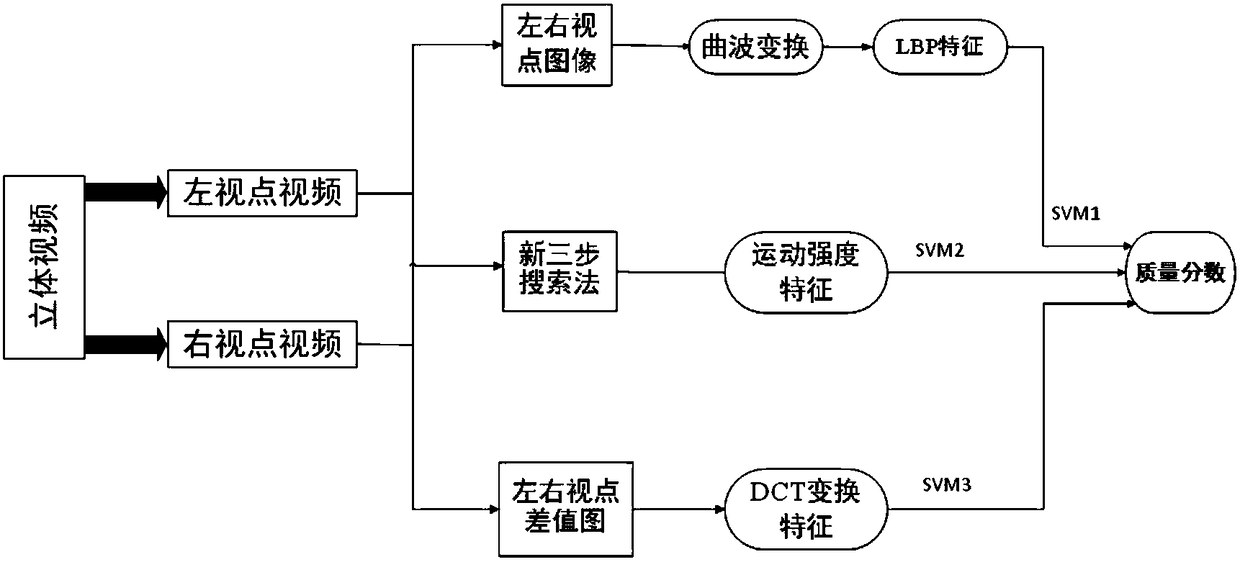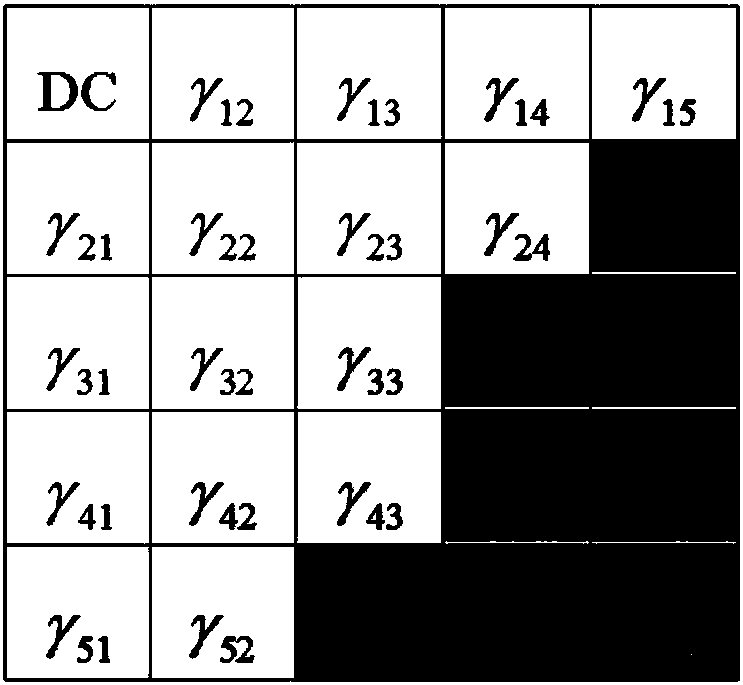Reference-free stereoscopic video quality objective evaluation method based on multi-view feature learning
A technology for objective quality evaluation and stereoscopic video, applied in the field of video processing, it can solve the problems of high cost, long time, and difficult application, and achieve the effect of high consistency, improved performance, and accurate and objective evaluation.
- Summary
- Abstract
- Description
- Claims
- Application Information
AI Technical Summary
Problems solved by technology
Method used
Image
Examples
Embodiment Construction
[0057] The present invention will be further described below in conjunction with the accompanying drawings.
[0058] The non-reference stereoscopic video quality objective evaluation method based on multi-view feature learning of the present invention utilizes the LBP operator to extract the characteristics of the influence of distortion on the spatial domain characteristics, uses the new three-step search method to extract the characteristics of the influence of distortion on the time domain characteristics of the video, and uses DCT Transform and extract the stereoscopic features of the video, and use the support vector machine (SVM) as a tool to train the extracted three-part features separately and obtain the quality scores of the three parts; finally weight the three-part scores as the final result of the stereoscopic video Quality score, so as to make a more comprehensive and accurate objective evaluation of stereoscopic video quality.
[0059] Such as Figure 1 to Figu...
PUM
 Login to View More
Login to View More Abstract
Description
Claims
Application Information
 Login to View More
Login to View More - R&D
- Intellectual Property
- Life Sciences
- Materials
- Tech Scout
- Unparalleled Data Quality
- Higher Quality Content
- 60% Fewer Hallucinations
Browse by: Latest US Patents, China's latest patents, Technical Efficacy Thesaurus, Application Domain, Technology Topic, Popular Technical Reports.
© 2025 PatSnap. All rights reserved.Legal|Privacy policy|Modern Slavery Act Transparency Statement|Sitemap|About US| Contact US: help@patsnap.com



